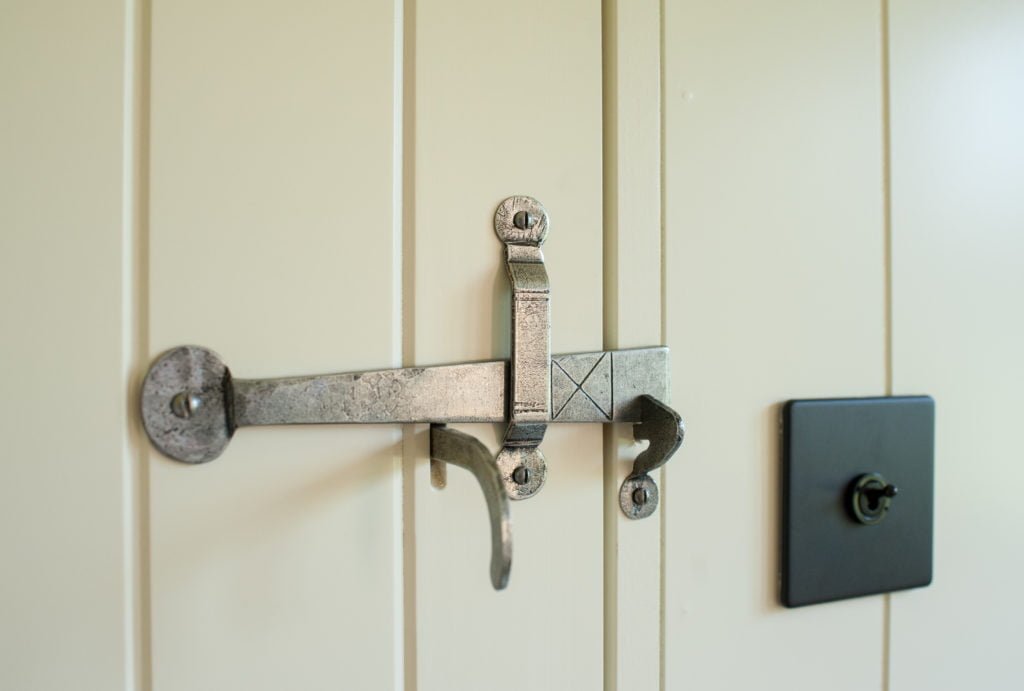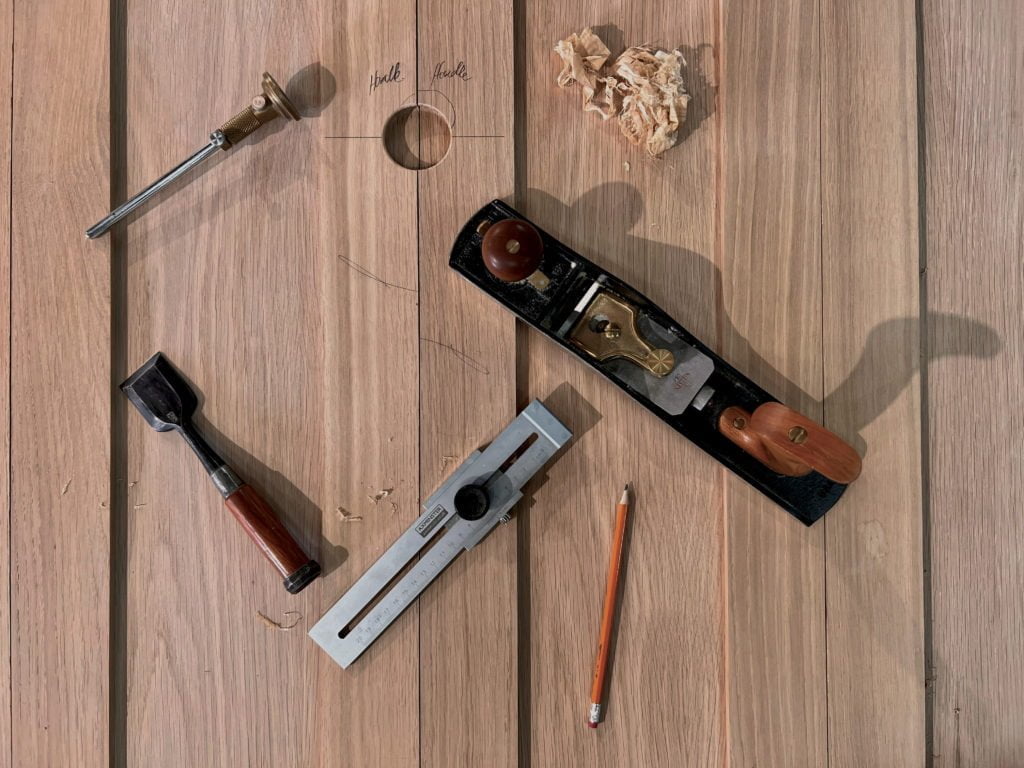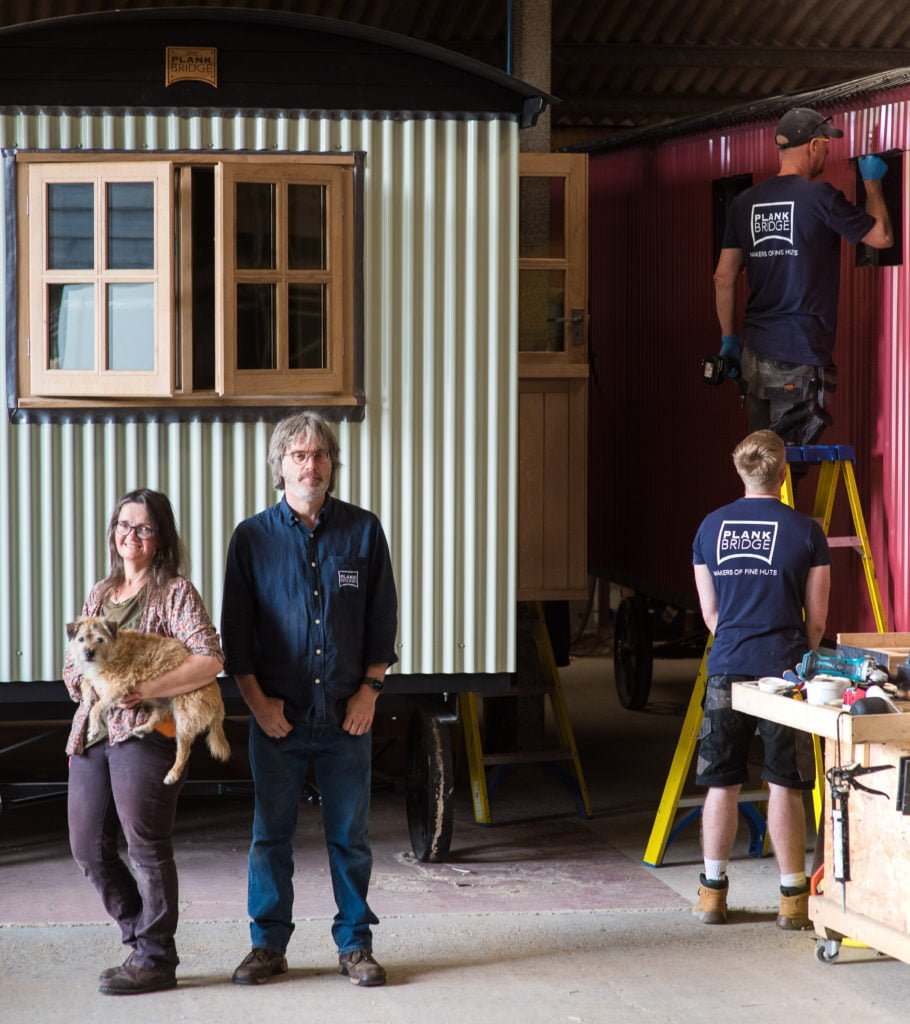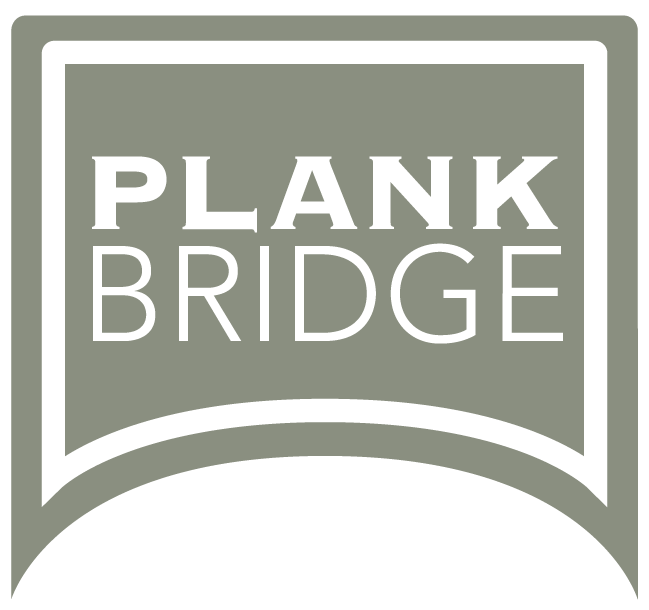There are several craft elements of a hut build that may not appear obvious to the casual observer. I like that; it’s a bit like a great painting, where well-hidden details might reveal themselves after you’ve been familiar with a piece of art for months or even years.
The Plankbridge team take a lot of pride in lining up the slotted screws on hinges and ironmongery. It would, of course, be much easier if a little lazy to drive in some pozidrive screws, but slotted screws only take a little longer and it’s the kind of detail that I like to see.

The look, feel, and often smell of a beautifully crafted detail contributes to the magic of the whole. A hand-crafted tanned leather strap, mounted on blacksmith forged ironwork, hand-forged by our own blacksmith over Dorset charcoal epitomises our craft and sustainability values. There is something very pleasing about the unique hammer marks and patina of hand-forged iron, and the hand stitching of a Dorset saddler. We tend to finish the metalwork pieces either in a beeswax or powder coat in a durable pewter / gunmetal finish.

We are increasingly using home-grown timbers such as Ash, Oak and Sweet Chestnut, and some European stock too. The furniture makers in the team carefully select the grain from rough-sawn boards before prepping and planing the stock to make tables and other furniture within the shepherd’s huts. Grain selection, flipping the grain on each corresponding board of a glued-up tabletop contributes the appearance and stability of the piece. Wood, seasoned and kilned to a suitable moisture content of 10 to 12 % or so, has tensions that are released as each process occurs. Skilled furniture makers manage this character trait of timber throughout the build, from the boards which are held ‘in stick’ to allow the air flow right through to the oiling process before being fitted in the hut. We usually use Tung oil for finishing, sourced from the Tung nut and is a most natural finish which gives a more pleasant nutty colour to oak, rather than the slightly yellow tint of many oil finishes.

Our paint finishers are extremely talented, and I’m always struck by the quality of the paint finish that Tim and Abi achieve. Jane and I brush-painted the huts in the early years and it took a long time. Today we have complete control of temperature and atmospheric conditions within two professional paint shops, one with room for two huts to be pulled into for exterior and interior paint, and one smaller paint booth for furniture and interior doors. Paint finishing is a craft and skill like any other and it’s so impressive to watch these two talented people handle their material and equipment with such unrivalled skill.

Hutmaking as a craft wasn’t a thing when we started. I did a bit of research in the early days and it’s certainly a craft now. We have several members of the team who started with us from leaving school or college and have trained in-house, and are now training others.
I try to surround myself with hand-crafted things, increasingly so. My mug of tea is in a wonderful wood-fired vessel by Tim Hurn, near Bridport. The more we all embrace craft and design and surround ourselves with all things grown, crafted and handmade by real, talented people the more we make the world a better place.
We are increasingly bringing crafted designer/maker elements into the hut builds, and there have been some really exciting ideas on the drawing board in recent weeks. Keep an eye out as Plankbridge continues to evolve and innovate. It’s one of the reasons why Plankbridge is considered by many to be the number one hutmaker.
Author: Richard Lee, Co-Founder

